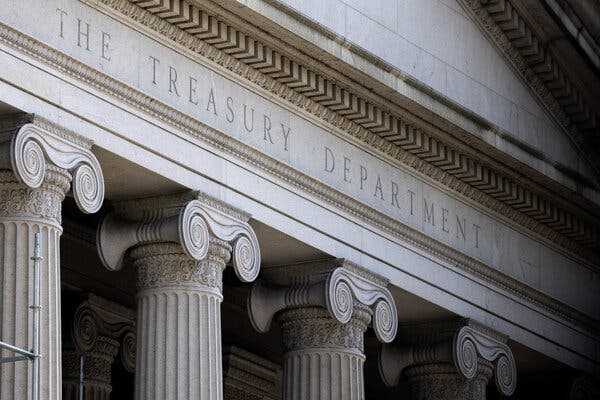The Treasury Department estimates that a new law requiring big companies to pay a 15 percent tax will raise $250 billion from large corporations over the next 10 years.
Listen to this article · 5:00 min Learn more
- Share full article

The Treasury Department on Thursday is releasing proposed rules for the corporate alternative minimum tax, which applies to roughly 100 companies with more than $1 billion in profits.
When Democrats created a new corporate tax regime two years ago, their goal was seemingly simple: rein in the ability of large companies to pay little or no federal income tax.
Now, with the Treasury Department and Internal Revenue Service releasing hundreds of pages of proposed rules for the tax on Thursday, it has become clear that achieving that goal will be exceedingly complex. Not only has it taken years to figure out how to administer it, but the tax has also laid bare a central challenge for policymakers trying to overhaul corporate taxation in the United States: what looks like a “loophole” to one is a reasonable economic incentive to another.
The corporate alternative minimum tax, which was signed into law as part of the 2022 Inflation Reduction Act, applies to roughly 100 companies with more than $1 billion in profits.
The theory behind the tax is that these companies often report large profits to shareholders, driving up their stock price. Yet those same companies can owe little to no federal taxes because of deductions and credits that allow them to winnow down their tax bills.
To try and address that discrepancy, the new tax requires companies to pay at least 15 percent of the adjusted profits they report to shareholders. But the new minimum tax still provides for several prized tax breaks that should allow companies to pay less than the 15 percent floor. Those include the ability to use tax credits, quickly write off the cost of business assets and count losses against tax bills in future years.
“The bill was predicated on what our legislators call loopholes in our tax laws and solving this problem, and then we add in all these adjustments that are essentially the same thing we already had,” Jeff Hoopes, an accounting and public policy professor at the University of North Carolina, said. “A lot of companies will still pay less than 15 percent.”
We are having trouble retrieving the article content.
Please enable JavaScript in your browser settings.
Thank you for your patience while we verify access. If you are in Reader mode please exit and log into your Times account, or subscribe for all of The Times.
Thank you for your patience while we verify access.
Already a subscriber? Log in.
Want all of The Times? Subscribe.
SKIP ADVERTISEMENT
Source: nytimes.com



